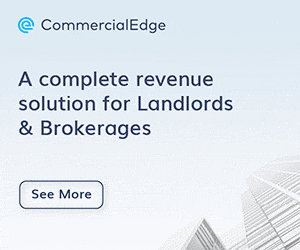
The Essentials of Budgeting for CRE Brokerages

Smart and efficient budgeting is a core aspect of running a successful business and commercial real estate (CRE) brokerages are no exception. While budgeting at a macro level needs to be a concern throughout the year, when it comes to creating a longer-term financial plan, brokerage leadership must dedicate sufficient time and resources to identify all revenue streams and expenses.
Brokerage executives need an accurate overall picture of their company’s financials, but incoming and outgoing funds must also be explored and interpreted at a more detailed, micro level. Strategic groupings of financials can deliver core insights and identify brokerage pain points, vulnerabilities, resiliency verticals and increased ROI-oriented expansion prospects.
Budget Planning Essentials
There might not be one single best way to run a brokerage, but there are a few essential aspects to consider and analyze when budgeting for a full business year:
- Realistic timelines
Even in the case of a boutique brokerage, longer-term budget targets cannot be set from one day to the next. In fact, industry experts recommend taking two to four weeks to thoroughly analyze all business financials in the wider context of economic and industry fundamentals.
- Compartmentalized analysis
One of the most efficient ways to handle budget planning is to break budgeting tasks down into specific business components such as revenue, payroll, technological upgrades, business development, etc. Once this compartmentalization has been achieved, leadership can gain fresh insight into specific areas of growth, as well as potential weaknesses.
- Historical data
Even when coming off a busy and revenue-rich period, any successful brokerage is aware of the cyclical nature of the CRE industry, both in seasonal terms as well as within longer economic cycles. Additionally, having an overview of peak activity and revenue periods for specific team members can give invaluable planning insights.
While market trends can now be studied without a brokerage’s internal historical data by sourcing information from third parties, one brokerage cannot rely on the historical internal data of another. Annual expense budgets, revenue and loss projections and other associated internal data is a core element of reliable future budgeting. To further elevate access to and overview of such data points, CRE executives can leverage next-gen software platforms with built-in pipeline capabilities.
Essential Budgeting Approaches
Each firm and brokerage may have their own internal formulas to determine revenue, revenue sources and costs when determining revenue, costs and financial plans, but there are three essential approaches:
- The Revenue Per Agent Method
The most essential part of any budget planning process, figuring out how much revenue each agent and broker is bringing in, is also the most complex. This is the result of the opaque and intricate formulas needed to establish commissions for each agent, probably the least transparent and least understood aspect of being a CRE professional.
In fact, brokers and agents themselves often do not know the exact amount they will make, due to gradual commission split plans and the significantly longer and usually multi-step payout of earnings. To eliminate human errors in revenue tracking, invoicing and disbursement, as well as to provide detailed historical data and a significantly shortened timeline, today brokerages can implement revenue tracking software.
While such solutions add to the overall overhead of a brokerage, in the long term the cost is justified by more accurate budget predictions thanks to the availability of historic internal data, exactly determined earnings brought in by each agent and broker, shorter timelines and even increased team morale and collaboration.
- The Revenue Per Sector Method
The next essential budgetary overview is the sector-level breakdown, where the leadership of a brokerage determines the revenue generated by each CRE sector: office, industrial, retail, land and investments. This is helpful not only in identifying the most and least profitable industry segments for a brokerage, but also empowers leadership to contextualize their business’ performance in the wider local market.
For example, if the brokerage operates in a market where industrial sales and leases are surging, but the brokerage is underperforming compared to available opportunities, managing partners may consider hiring additional agents specialized in industrial assets, or provide further guidance and training to their existing team to maximize opportunities.
While such an analysis usually requires a significant amount of overview and calculations, it is a strategic budgetary overview that can be significantly simplified with the use of specialized CRE technology.
- The Revenue Per Desk Method
Another essential approach to examine the health of a brokerage is to establish and monitor the company’s desk costs. Depending on the setup of each brokerage, desk costs establish how much the brokerage spends on each team member and will include expenses such as training, licensing costs, advertising and more.
The most straightforward way of establishing a firm’s effective desk occupancy (EDO) is by determining how much the brokerage spends on all of its agents and then dividing that figure by the number of agents. This will provide the average cost per agent — a useful data point, but even more insightful is the exact cost per each individual agent. A significantly more time- and resource-heavy calculation, this key performance indicator can be easily established and monitored with technology platforms that track and automate calculations of individual desk costs.
Agile CRE Platforms That Streamline Budget Planning Operations
Future-forward brokerages know that budgeting is about far more than simply making sure costs don’t exceed revenue. By determining agent, sector and desk costs, the managing partners of a brokerage can plan ahead strategically to minimize costs and maximize revenue streams.
Although this usually would mean significant amounts of time invested into tracking down all paperwork and determining each performance indicator, new CRE solutions like CommercialEdge for Brokerages empower leadership to streamline back-office operations, establish accurate budget predictions, while also providing unparalleled overviews of invoices, individual receivables, commission plans and revenue disbursement, year after year.

More Articles You Might Like
Walkable Urbanism to Drive Future Real Estate Development in the U.S.
The 2023 Foot Traffic Ahead report takes an in-depth look at walkable urban areas in the top 35 U.S. metros.
Global Medical REIT Streamlines Deal Flow and Portfolio-Wide Reporting with Deal Manager
With Deal Manager, Global Medical REIT streamlines portfolio-wide reporting and access to fast and accurate leasing data across teams.



